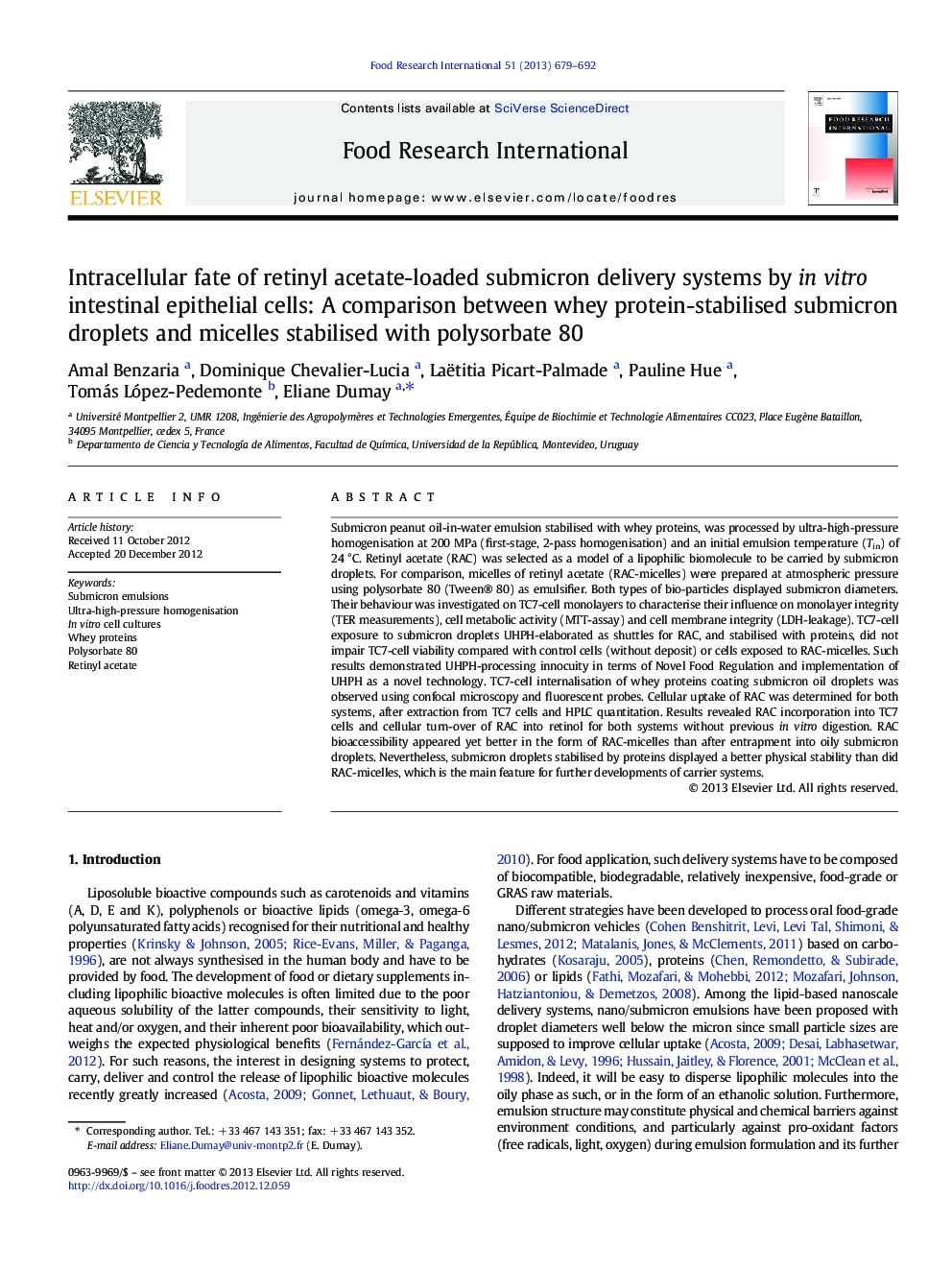| Article ID | Journal | Published Year | Pages | File Type |
|---|---|---|---|---|
| 6398056 | Food Research International | 2013 | 14 Pages |
Submicron peanut oil-in-water emulsion stabilised with whey proteins, was processed by ultra-high-pressure homogenisation at 200 MPa (first-stage, 2-pass homogenisation) and an initial emulsion temperature (Tin) of 24 °C. Retinyl acetate (RAC) was selected as a model of a lipophilic biomolecule to be carried by submicron droplets. For comparison, micelles of retinyl acetate (RAC-micelles) were prepared at atmospheric pressure using polysorbate 80 (Tween® 80) as emulsifier. Both types of bio-particles displayed submicron diameters. Their behaviour was investigated on TC7-cell monolayers to characterise their influence on monolayer integrity (TER measurements), cell metabolic activity (MTT-assay) and cell membrane integrity (LDH-leakage). TC7-cell exposure to submicron droplets UHPH-elaborated as shuttles for RAC, and stabilised with proteins, did not impair TC7-cell viability compared with control cells (without deposit) or cells exposed to RAC-micelles. Such results demonstrated UHPH-processing innocuity in terms of Novel Food Regulation and implementation of UHPH as a novel technology. TC7-cell internalisation of whey proteins coating submicron oil droplets was observed using confocal microscopy and fluorescent probes. Cellular uptake of RAC was determined for both systems, after extraction from TC7 cells and HPLC quantitation. Results revealed RAC incorporation into TC7 cells and cellular turn-over of RAC into retinol for both systems without previous in vitro digestion. RAC bioaccessibility appeared yet better in the form of RAC-micelles than after entrapment into oily submicron droplets. Nevertheless, submicron droplets stabilised by proteins displayed a better physical stability than did RAC-micelles, which is the main feature for further developments of carrier systems.
⺠O/W emulsions in the nanoscale range were UHPH-processed at 200 MPa (2-passes) ⺠Oil droplets stabilised with whey proteins were loaded with retinyl acetate (RAC) ⺠Retinyl acetate micelles stabilised with polysorbate 80 were studied for comparison ⺠RAC of both systems was uptaken into TC7 cells and converted into retinol ⺠UHPH-processed oily droplets ± RAC did not impair TC7-cell integrity or viability
